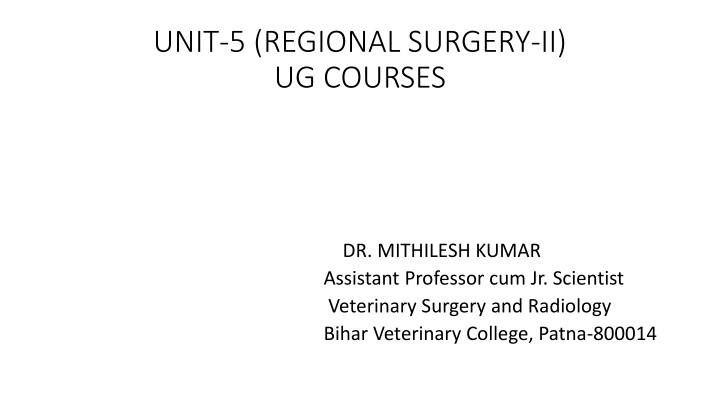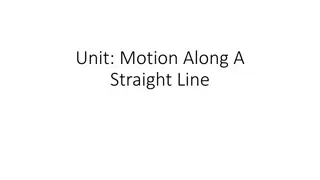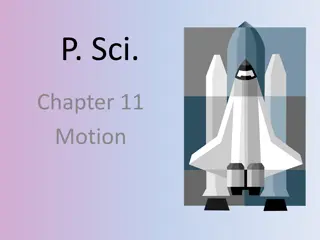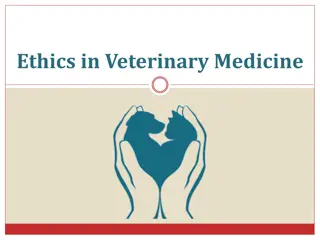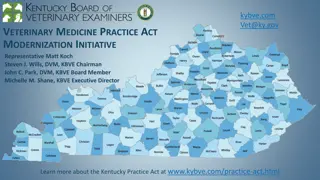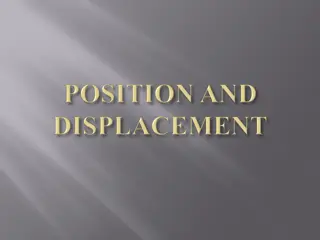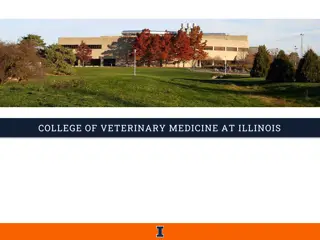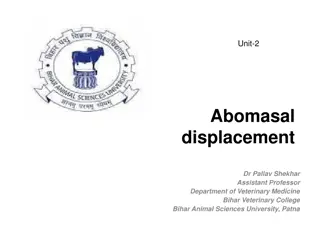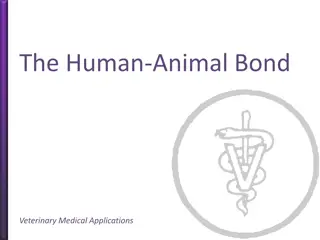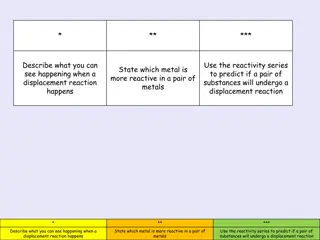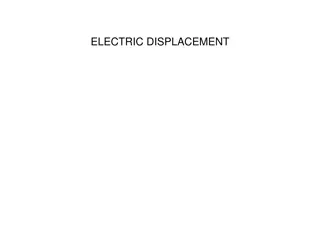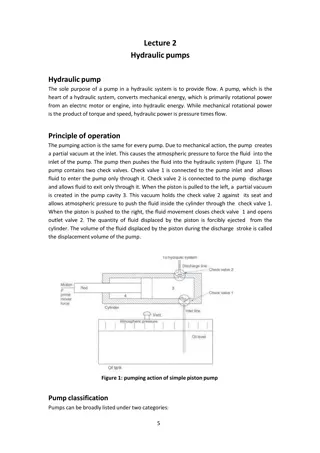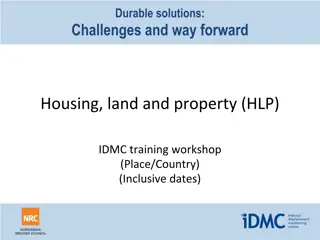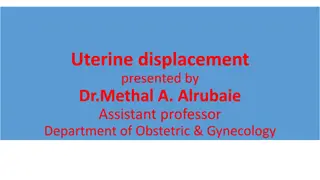Abomasal Displacement in Veterinary Medicine
Abomasal displacement refers to the movement of the abomasum, a wandering organ in cattle due to loose attachments. This condition can lead to left or right displacement, as well as torsion or volvulus. Various factors such as feeding high concentrate rations, metabolic alkalosis, and other metabolic issues can predispose animals to this condition. Clinical signs include anorexia, decreased milk yield, and abdominal pain. Diagnosis involves physical examination and can be challenging due to the nature of the displacement. Treatment typically involves surgical correction or conservative management.
Download Presentation

Please find below an Image/Link to download the presentation.
The content on the website is provided AS IS for your information and personal use only. It may not be sold, licensed, or shared on other websites without obtaining consent from the author.If you encounter any issues during the download, it is possible that the publisher has removed the file from their server.
You are allowed to download the files provided on this website for personal or commercial use, subject to the condition that they are used lawfully. All files are the property of their respective owners.
The content on the website is provided AS IS for your information and personal use only. It may not be sold, licensed, or shared on other websites without obtaining consent from the author.
E N D
Presentation Transcript
UNIT-5 (REGIONAL SURGERY-II) UG COURSES DR. MITHILESH KUMAR Assistant Professor cum Jr. Scientist Veterinary Surgery and Radiology Bihar Veterinary College, Patna-800014
ABOMASAL DISPLACEMENT The abomasum is wandering organ due loose attachment with greater and lesser omentum. Easily displace to left (left displacement of abomasum or LDA) Displace right (Right displacement of abomasum or RDA) Rotation on its mesenteric axis results in an abomasal torsion or abomasal volvulus. Countries where feed consists of high proportion of grains and concentrates than roughage.
High incidence three weeks antepartum to four weeks postpartum. The LDA occurs more frequently antepartum while RDA and AV higher postpartum. Aetiology:- Spontaneous recovery from LDA leading to RDA. RDA is more serious problem as some degree of volvulus exists. Few cases volvulus of the reticulum and abomasum associated. No exact etiology. Abomasal atony with increased gas production may act as a predisposing causes.
Feeding of high concentrate ration increases production VFA. Unabsorbed VFA pass from rumen into abomasum and decrease the contractility. Results accumulation of ingesta in the abomasum with production of large volumes of gases causing distention and displacement of the organ. A linear relationship has been reported between the amounts of grains fed and amount of gases produced. Hypocalcemia, metritis, mastitis, ketonuria, traumatic reticulitis may decrease the motility of abomasum predispose to displacement.
Metabolic alkalosis also reduces abomasal contractions. During pregnancy rumen is lifted by gravid uterus. Abomasum may slide to the left under the rumen. Following parturition rumen will come to its normal position. Distended and atonic abomasum get trapped between the rumen and Left abdominal wall to cause LDA. Clinical signs:- LDA Intermittent anorexia, gradual decrease in milk yield and ketosis, rapid loss of body condition, dull, listless, shifting of weight from one leg to other due to abdominal pain, Scanty faeces diarrhoeic constipated.
Sluggish and weak rumen movement, T, HR, RR are normal, dehydration. High pitched tympanic resonance (ping) heard oval area along a line from the left elbow to tuber coxae. Bulging of left paralumbar fossa. LDA rarely palpated per rectal examination. Simple dilatation of abomasum and RDA are similar to LDA. The distended abomasum may be palpated caudal to last rib. Tympanic resonance heard cranial to right para lumber fossa. In AV signs are more pronounced.
These signs include abrupt drop in milk yield, complete anorexia, acute abdominal pain and scanty faeces. Diagnosis:- History, clinical signs, detection of tympanic resonance. Rapid heart rate and drop in milk yield help to differentiate AV from RDA. Liptek test:- A 18 gauge needle is inserted aseptically just below the area of resonant ping in the left (LDA) or right (RDA) abdominal wall fluid is aspirated. If pH of fluid is between 1-4 indicates an abomasum. If pH 5-7 indicate rumen fluid.
TREATMENT: Correction of the displaced abomasum, restoration of GI motility, rehydration and correction of metabolic disorders. Calcium borogluconate, neostigmine, saline cathartics etc. Administration of warm saline solution and mineral oils evacuate GI content. Roll the animal side by side place in dorsal recumbency. Fixation of abomasum and omentum to body wall.
Left flank omentopexy (Utrecht method) Abdomen entered through 20cm long vertical incision in left flank. Abomasum lies under the incision. Greater omentum located needle threaded with 2 metre passed in or out of omentum with mattress suture over 7 cm. Suture material should extend from each end of suture. Abomasum is decompressed using a 13-14 gauge needle attached to rubber tube. Abomasum is pushed to the normal position.
Both end of suture carried along the internal body wall and forced through the ventral midline to midline. Assistant grasp the two ends suture pulled and and tied outside the body wall. After 4 weeks suture removed close to skin. LEFT AND RIGHT FLANK ABOMASOPEXY:- Similar to left flank omentopexy Suture is placed in simple continuous or interlocking in musculature of the greater curvature of abomasum. The ends are brought through ventral abdominal like omentopexy Left flank-LDA and right flank-RDA.
Both end of suture carried along the internal body wall and forced through the ventral midline to midline. Assistant grasp the two ends suture pulled and and tied outside the body wall. After 4 weeks suture removed close to skin. LEFT AND RIGHT FLANK ABOMASOPEXY:- Similar to left flank omentopexy Suture is placed in simple continuous or interlocking in musculature of the greater curvature of abomasum. The ends are brought through ventral abdominal like omentopexy Left flank-LDA and right flank-RDA.
Right flank omentopexy:- Right flank laparotomy is done in the standing animal. Abomasum is decompressed and volvulus corrected and abomasum repositioned. Two mattress suture of heavy catgut, one each cranial and caudal to incision are placed through peritoneum, transverse abdominal muscles and fold of omentum. The peritoneum and transverse muscles are then sutured in simple continuous pattern incorporating omentum. The laparotomy incision is closed in usual manner.
The aim is to produce adhesions between parietal and visceral peritoneum covering the greater omentum to hold omasum in normal position. Ventral paramedian abomasopexy:- The technique is used in both LDA and RDA. Surgery done under dorsal recumbency by sedation. The abdominal cavity entered through long incision between the ventral midline and right subcutaneous abdominal vein starting from just caudal to xiphoid process and cranial to umbilicus. The abomasum is pulled towards incision, decompressed and repositioned.
The greater curvature is sutured to the peritoneum and muscles of lateral aspect of the paramedian incision. The abdomen incision is closed routinely. This technique is easy.
CAECAL DILATION AND TORSION It involves distension, displacement and torsion of caecum. Free end of caecum in cattle is devoid of mesentery lead to rotation. Dilatation may proceed to torsion. After parturition and pregnant animal of cow, bullocks, sheep and goats may observed. Also observed in buffalo. Etiology not known But excessive grain feeding is animal reported. Feeding of excessive grain increased VFA and gas - Atony or hypomotility of caecum - dilation and torsion of the organ
CLINICAL SIGNS :- Simple dilatation of caecum may be acute if torsion occurs. Symtom similar to bowel obstruction. Early cases abdominal pain. Rapid loss of appetite, cessation of defaecation and dehydration. T, PR and HR are normal in simple dilatation but subnormal Temp and tachycardia in case torsion. Hypomotility of rumen or atony of rumen present in most of the cases. The right paralumbar fossa may be distended and tympanic resonance may be heard.
Similar resonance is heard in case of RDA but resonant area is smaller and more caudal in caecal dilation. The distended caecum may be rectally palpable like long cylindrical movable gas filled structure. Rupture of caecum may cause death. DIAGNOSIS:- History, clinical signs, auscultation and percussion and rectal palpation. Right flank laparotomy. Hypochloraemic, hypokalemic metabolic alkalosis. Hemoconcentration, azotaemia observed.
Similar finding are also observed in bowel obstruction. TREATMENT:- Conservative treatment in case of dilatation without torsion. It is parasympathomimetic drugs such as neostigmine. It can given S/C every 3 to 4 hrs over 2 to 3 days in gradually decrease dose 12.5 mg to 2.5 mg Alternative continuous drip of drug (200 mg in 10 litres of normal saline. Liquid paraffin oral purgative.
Above fails surgery indicated. Right flank laparotomy is done standing animal and free end of caecum is exteriorized. Packing the laparotomy wound and caecotomy done to remove the content. Caecum is closed after cleaning with NS. Suturing done with absorbable suture material like enterotomy. Torsion is corrected and caecum paled in normal position. The laparotomy wound is closed in the usual manner. Typhlectomy is also indicated in necrosed caecum. Blood vessels ligated and resected necrosed caecum
Ileum and colon are anastomosed by Connell pattern using chromic catgut
